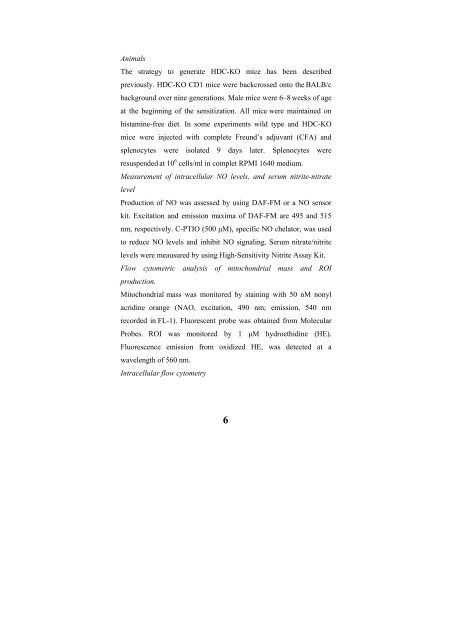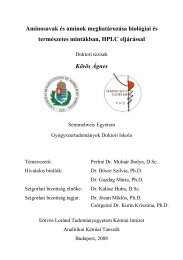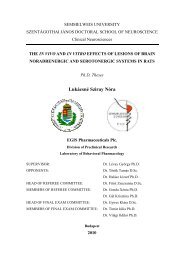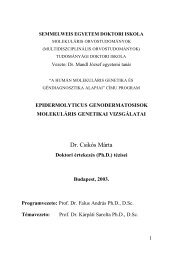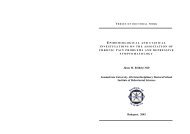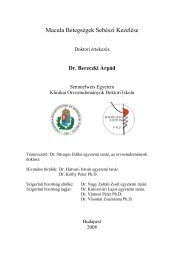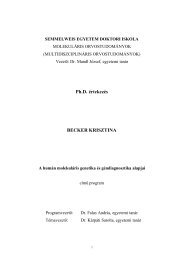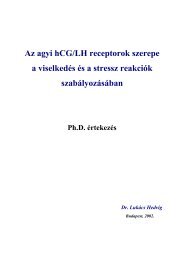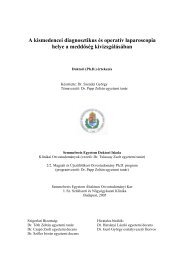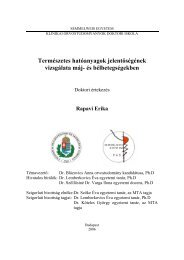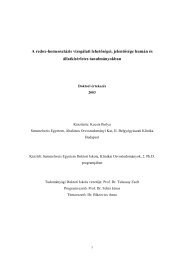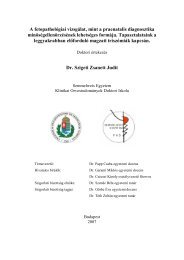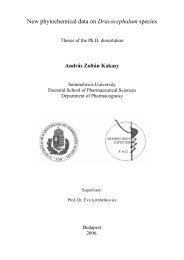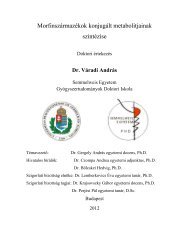ROLE OF NITRIC-OXIDE ON T CELL ACTIVATION Ágnes Koncz MD.
ROLE OF NITRIC-OXIDE ON T CELL ACTIVATION Ágnes Koncz MD.
ROLE OF NITRIC-OXIDE ON T CELL ACTIVATION Ágnes Koncz MD.
Create successful ePaper yourself
Turn your PDF publications into a flip-book with our unique Google optimized e-Paper software.
Animals<br />
The strategy to generate HDC-KO mice has been described<br />
previously. HDC-KO CD1 mice were backcrossed onto the BALB/c<br />
background over nine generations. Male mice were 6–8 weeks of age<br />
at the beginning of the sensitization. All mice were maintained on<br />
histamine-free diet. In some experiments wild type and HDC-KO<br />
mice were injected with complete Freund’s adjuvant (CFA) and<br />
splenocytes were isolated 9 days later. Splenocytes were<br />
resuspended at 10 6 cells/ml in complet RPMI 1640 medium.<br />
Measurement of intracellular NO levels, and serum nitrite-nitrate<br />
level<br />
Production of NO was assessed by using DAF-FM or a NO sensor<br />
kit. Excitation and emission maxima of DAF-FM are 495 and 515<br />
nm, respectively. C-PTIO (500 μM), specific NO chelator, was used<br />
to reduce NO levels and inhibit NO signaling. Serum nitrate/nitrite<br />
levels were meausured by using High-Sensitivity Nitrite Assay Kit.<br />
Flow cytometric analysis of mitochondrial mass and ROI<br />
production.<br />
Mitochondrial mass was monitored by staining with 50 nM nonyl<br />
acridine orange (NAO, excitation, 490 nm; emission, 540 nm<br />
recorded in FL-1). Fluorescent probe was obtained from Molecular<br />
Probes. ROI was monitored by 1 μM hydroethidine (HE).<br />
Fluorescence emission from oxidized HE, was detected at a<br />
wavelength of 560 nm.<br />
Intracellular flow cytometry<br />
6


